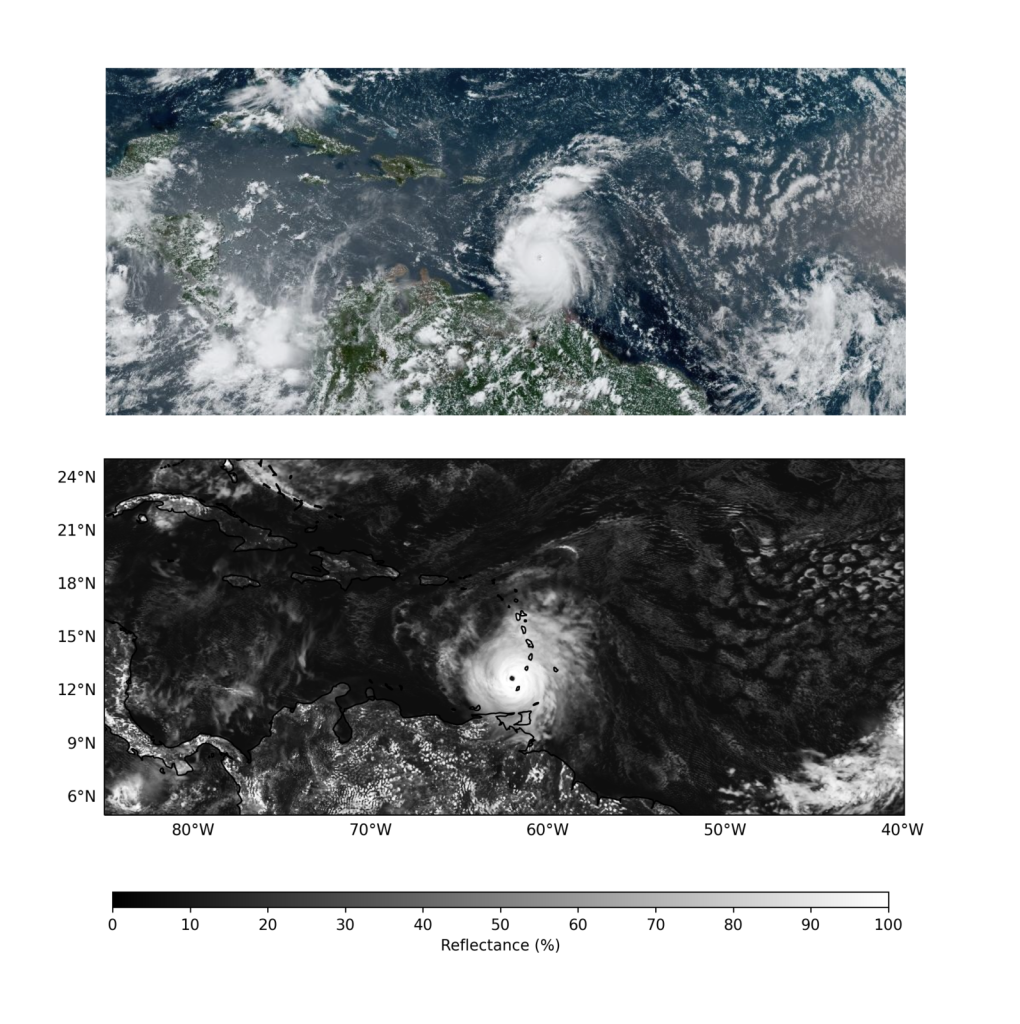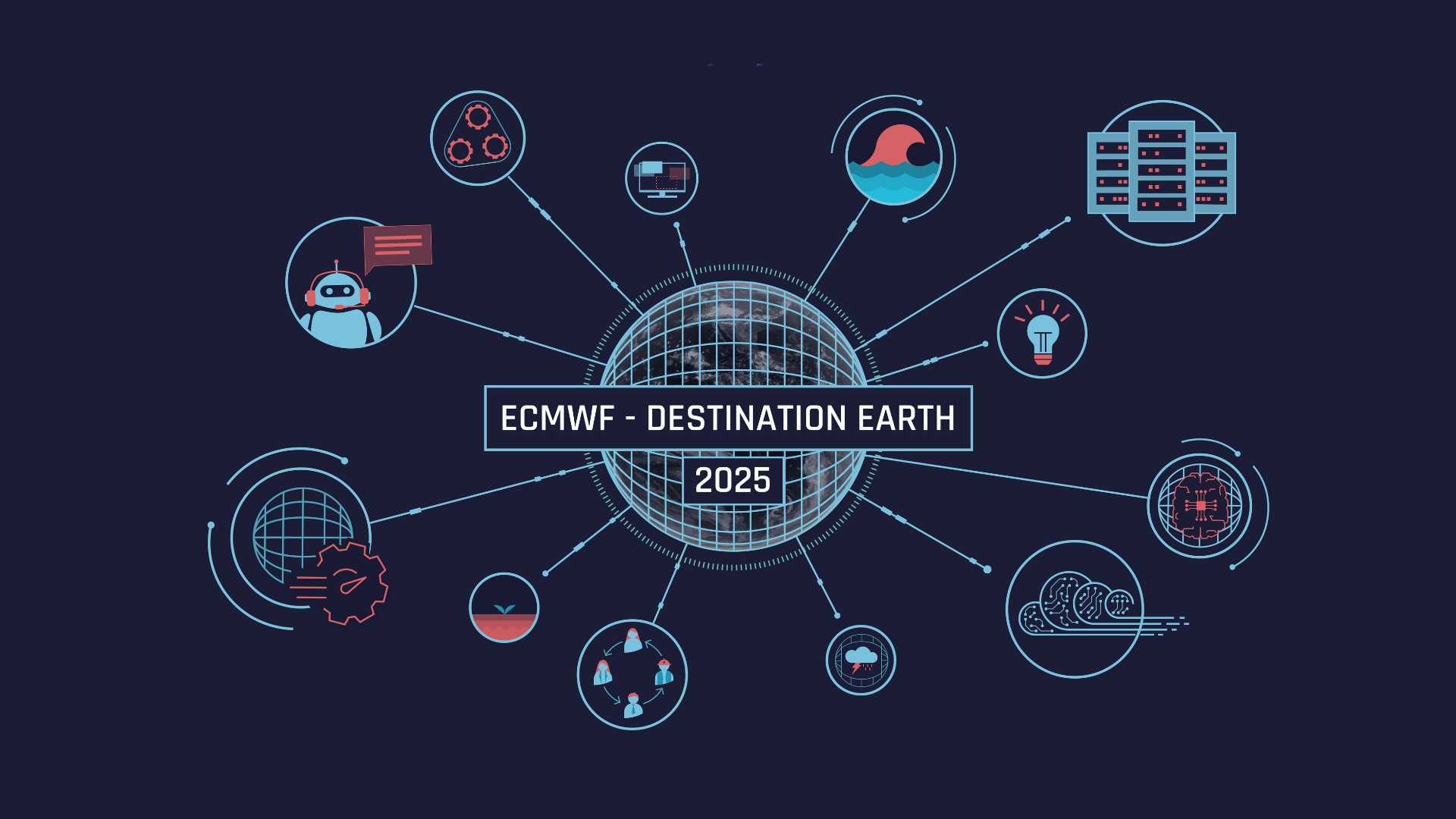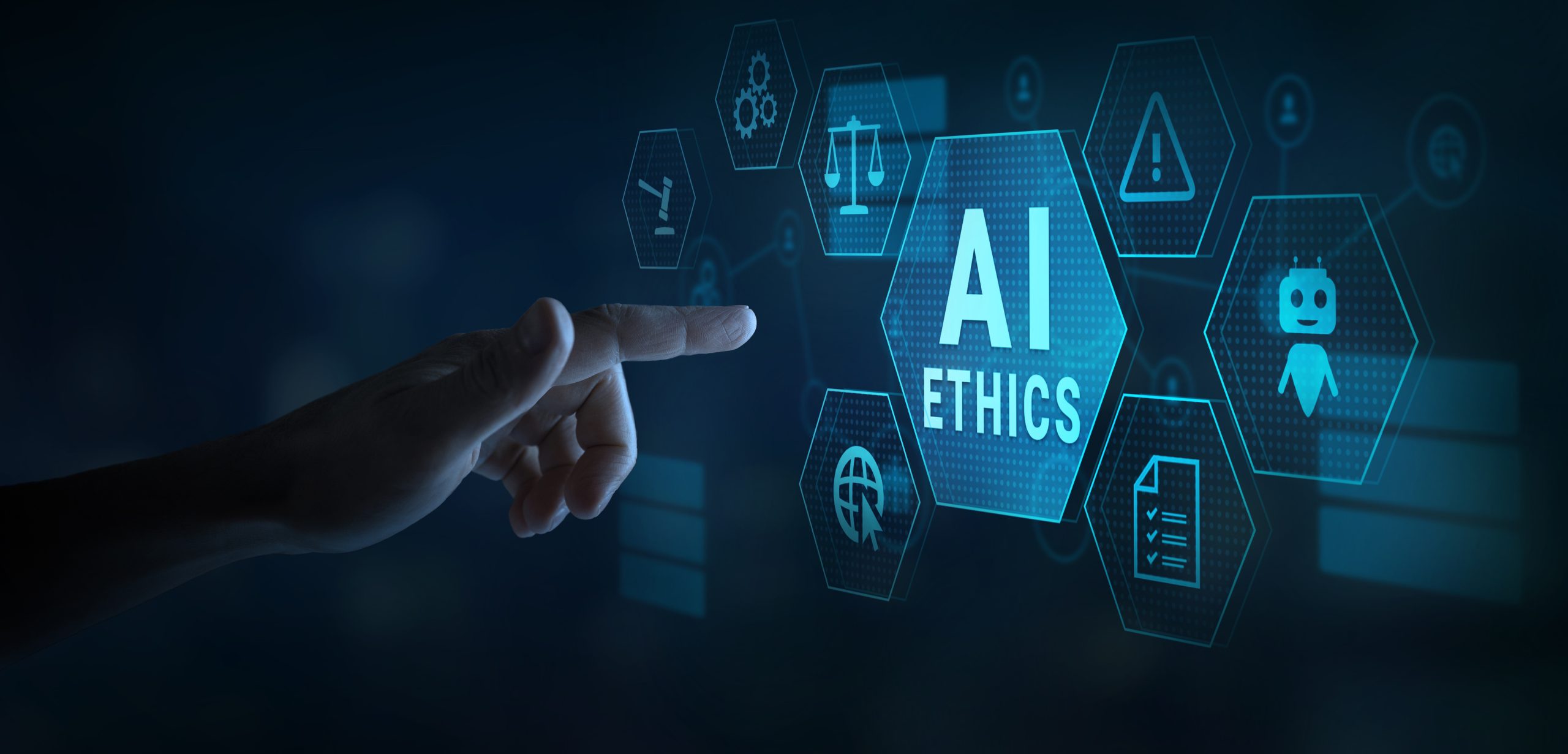
Director for Destination Earth (DestinE) at the European Centre for Medium-Range Weather Forecasts (ECMWF) Irina Sandu was invited to talk on the WeatherPod, a prestigious, specialised podcast about the global weather enterprise hosted by Alan Thorpe and David Rogers.
The episode dedicated to DestinE digital twins was an opportunity for an in-depth discussion about the ambitious initiative of the European Union to build a digital replica of the Earth system and in particular the involvement of ECMWF, that is in charge of delivering the first two, high priority digital twins on Weather-induced Extremes and Climate Change Adaptation as well as the Digital Twin Engine, the software infrastructure behind the digital twins, together with nearly 100 partners throughout Europe.
Experienced scientists with a focus on the weather enterprise, Alan Thorpe and David Rogers lead this podcast dedicated to how weather and climate information helps build a more resilient society face to climate change and extreme weather phenomena. Following the fast developments in artificial intelligence and machine learning, the WeatherPod has launched a special series of episodes dedicated to the impact of AI in weather prediction. For their 4th episode of the series, Thorpe and Rogers invited Irina Sandu.
Watch the episode:
Listen on Spotify – Listen on Apple Podcasts
Available also on Acast and Business of Weather
Dr. Alan Thorpe was Director-General of ECMWF between 2011 and 2016. Professor at the University of Reading, he is an reknowned voice in numerical weather prediction (NWP) and its evolution.
Dr. David Rogers is a Senior Consultant for the World Bank, founder of the Health and Climate Foundation and is a specialist in all aspects regarding weather, hydrology and climate services.
The conversation covered all the hot topics involving the digital twins’ development and implementation. The two experts questioned the Director of DestinE at ECMWF about the use and benefits of machine learning and artificial intelligence, the synergies with existing national meteorological and climate services and other European initiatives, the added value of digital twins’ vis-a-vis the current weather forecasting and climate projection systems and much more.

Machine Learning and Artificial Intelligence
Regarding the hot topic of ML/AI, Irina Sandu explained that a key use of these new techniques that have experienced major breakthroughs in the domain of weather predictions in the last couple of years is uncertainty quantification. Given the extraordinary volumes of data generated by the high-resolution simulations of the digital twins, scientists cannot perform many simulations to evaluate the probabilities, like in traditional numerical weather prediction. Machine learning plays a vital role in solving one of the main challenges of a system like the digital twins.
ML and AI will also contribute to enhance the interactivity, which is a main characteristic of the digital twins and it’s also helpful to develop the concept of “forecast in a box” where, instead of giving people a large batch of data, users will be able to perform the forecasts themselves from any computer, based on their own parameters and needs.
Rogers pointed out, based on a previous talk with Deputy Director-General and Director of Forecasts at ECMWF Florian Pappenberger, that sometimes the errors of physical models propagate in the AI-based models and that a constant process of adaptation and updating to new developments is needed.
“It’s a very good point, it is a continuous evolution. Destination Earth is a long-time endeavour and even though we benefit from decades of expertise on weather and climate science and technology, the digital twins are not completely done in a few years. We have achieved a lot in the first phase of DestinE, and we see exciting first results. For example, we have managed to run simulations at very high-resolution scales on brand-new supercomputers, provided by the EuroHPC Joint Undertaking, with mixed architectures of CPUs and GPUs. But we do need to feed continuously the latest science and technology advances into the digital twins so that they remain at the cutting-edge. AI brings fascinating opportunities to complement what we are already doing with the physical models.” said Irina Sandu.
Dr. Alan Thorpe asked what has changed in the last few years to make an achievement like multi-decadal simulations at resolutions of 5 km possible, wondering if it was all related to the new European high-performance computing capabilities.
“There is a combination of advances which allows us to reach these resolutions of 5 km for atmosphere, ocean, land and sea ice for the Climate Digital Twin simulations. One is the computing power, indeed: LUMI, on which the first simulations at these scales were performed is the first pre-exascale supercomputer in Europe, part of the EuroHPC network, located in Finland, in Kajaani. It’s the 5th supercomputer in the world in terms of computing power. The other two main supercomputers we are using in Destination Earth, Leonardo in Bologna, Italy and MareNostrum5 in Barcelona, Spain are number 7 and number 8 in the TOP500 list. So, we are using part of the resources of three of the best supercomputers in the world. We are setting a blueprint for distributed computing in weather and climate information and that’s another novelty. The other advances that make the digital twins possible are the development of a new generation of storm and eddy resolving models, which underpin the digital twins in a number of national and European projects, like for example the H2020 project nextGEMS, and their adaptation to the mixed architectures of the EuroHPC supercomputers.’
What makes a digital twin
The hosts also raised the question of interactivity, which is one of the main differences between a digital twin and the current systems.
“I think the digital twins are really stressing interactive capabilities” said David Rogers, “how users are able to interact with the information the twins produce and with the whole modeling system, who are the users how is it used, how do you interact with the digital twins?”
Irina Sandu replied that there are several layers of interactivity, for example within the Climate Change Adaptation Digital Twin, developed by a partnership led by CSC under a contract procured by ECMWF. The Climate DT is the first attempt to produce bespoke multidecadal climate simulations at an unprecedented resolution of 5 km. Users will be able to interact with the workflows, the data and the simulations in different ways. “Maybe the best is to give an example. Climate and global weather simulations are expensive so not every user can run the digital twin, but selected users – when there is a priority for a Member State or the European Union, could for example request a specific simulation to investigate the impact of certain global policy decision, or a new scenario.”

Another level of interactivity offered by the digital twins is achieved through co-design with users from the sectors most impacted by climate change. Experts from the wind energy or the hydrology sector and water management are already being able to “plug” their different impact sector models at different levels of the workflow and collect the information as the simulation is running.
“We are experimenting with coupling impact-sector applications in different places of the workflow. Some applications can be co-located in the same workflow as the earth-system models on the HPC, if they need large volumes of data, so that they can collect the needed input parameters from the ‘hot storage’ while the models run. Others can wait for the simulation to be finished and stored, and they can access it from the Data Lake. The Digital Twin Engine (DTE) that we are developing will allow them to deal with these large amounts of data in an easier way. For example, if one application needs information for a selected wind farm, instead of extracting the global fields, it can extract the information only at the location of interest. We are developing a software called Polytope, as part of the DTE, which allows a such a tailored access to the digital twin data.”
Alan Thorpe tried to find out more about the interactivity aspect of the digital twins.
“In weather forecasting for example we are quite used to the idea of post-processing, so the numerical model produces a lot of data and afterwards we can manipulate and analyse the data. It’s an analysis done once the model is run, to generate the specific type of information we need or even to correct unknown biases in the raw data. What are the benefits of getting the data interactively compared to doing it after the fact?”
Irina Sandu gave the example of the Weather-induced Extremes Digital Twin, where there is a regional component developed by a team of meteorological services from over 20 European Countries, led by Météo France, under a contract procured by ECMWF. This component is a configurable, modular prediction framework that is breaking away from the principle that the regional models are run for specific fixed domains and then post processing is run for specific applications.
“Let’s imagine a winter storm, coming from the Atlantic and crossing Europe. This framework can be activated on demand to zoom on the storm at 500 metres resolution and follow it as it moves over the continent. It does not activate only the weather model, it also allows to activate the wind farm parametrization that computes the capacity factor of the wind turbines and basically indicates when the wind turbines will shut down. These are data very important for energy production and energy trading, so we will get the information much faster. Of course, this capability will not be activated every day but only for significant extreme events for which the higher resolution of the system can bring an added value. This component of the digital twin is focused is bringing complementary information targeted for extreme events, not only for weather but also for the impact sector.”
Near-surface wind speed, on a grid of 100 km resolution – corresponding to previous global climate simulations, and of 5 km resolution – as simulated in one of the prototype runs of the Climate DT. Use the slider to compare the different resolutions. Credit: Aleksander Lacima-Nadolnik & Katherine Grayson, BSC, Climate DT Team
A newcomer complementing the existing services
The discussion also delved into the question of how Destination Earth fits in the existing landscape of national meteorological and hydrological services and European services, such as the Copernicus services. Irina Sandu explained that there is already a complementarity happening, where the developments of DestinE help improve the operational models and services. Vice versa, DestinE digital twins build on decades of developments in the context of existing services, and would not be possible without the powerful cooperation in the European Meteorological Infrastructure.
Irina Sandu stressed that the responsibility for weather information and warnings, and for protecting lives and property remain with the national and regional authorities designated by the member states, but they will benefit from DestinE enhanced data as a complement to existing data sources, that can provide additional valuable weather and climate information.
“DestinE’s digital twins are not replacing everything we have, by any means, but they are really complementing our capabilities. They are providing another type of information to our Member States and the National Meteorological services, which are the ones responsible for saving lives and property, that they can combine with existing sources, to improve the way the ability to respond and adapt to extreme events and climate change.”
Destination Earth is a European Union-funded initiative launched in 2022, with the aim to build a digital replica of the Earth system by 2030. The initiative is being jointly implemented under the leadership of DG CNECT by three entrusted entities: the European Centre for Medium-Range Weather Forecasts (ECMWF), responsible for the creation of the first two ‘digital twins’ and the ‘Digital Twin Engine’, the European Space Agency (ESA) responsible for building the ‘Core Service Platform’, and the European Organisation for the Exploitation of Meteorological Satellites (EUMETSAT), responsible for the creation of the ‘Data Lake’.
We acknowledge the EuroHPC Joint Undertaking for awarding this project strategic access to the EuroHPC supercomputers LUMI, hosted by CSC (Finland), and the LUMI consortium, Marenostrum5, hosted by BSC (Spain) Leonardo, hosted by Cineca (Italy) and MeluXina, hosted by LuxProvide (Luxembourg) through a EuroHPC Special Access call.
More information about Destination Earth is on the Destination Earth website and the EU Commission website.
For more information about ECMWF’s role visit ecmwf.int/DestinE
For any questions related to the role of ECMWF in Destination Earth, please use the following email links:


